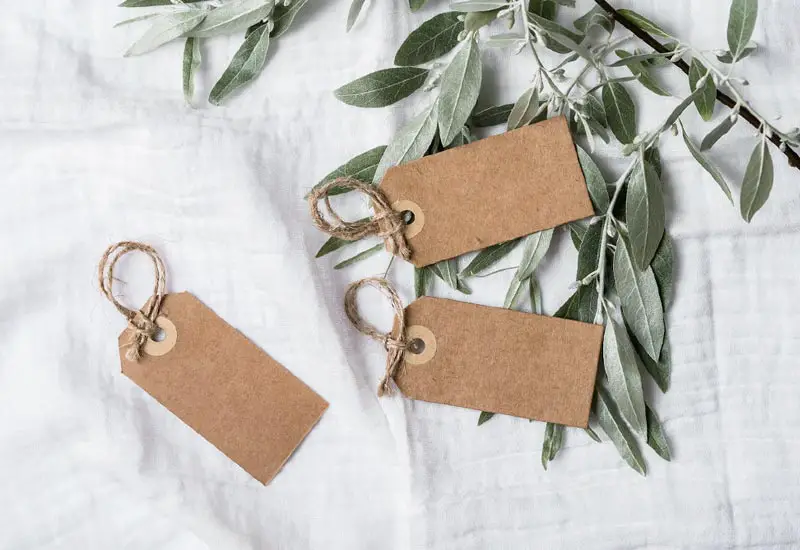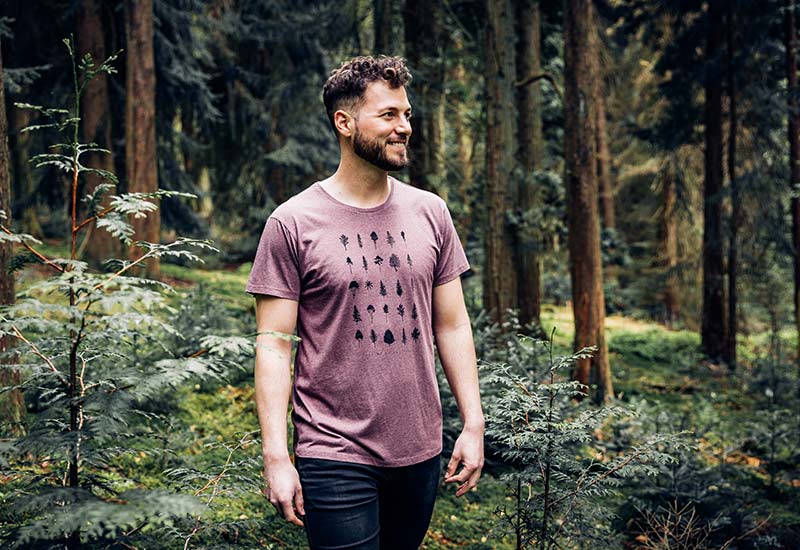How can you more easily recognize sustainable fashion? If you want to make buying eco-friendly clothes a little easier, you've come to the right place! Round 60 new items of clothing are bought by German consumers every year on average - quite a lot, don't you think?
However, this overconsumption is particularly critical if the pile of clothes is also environmentally harmful or has even been made by children. Unfortunately, you often can't tell directly from sweaters, shirts, dresses, pants, socks and shirts whether they have been produced fairly and ecologically.
In this article, I would therefore like to give you some valuable tips and criteria that will make it much easier for you to recognize sustainable fashion in the future. Let's go!
1. Look for Certifications and Labels

The most important identifying features of sustainable clothing definitely include meaningful certifications, whose logos indicate the Product label or other parts of the sweaters, shirts, pants and other items of clothing on offer.
In my opinion, these are the strictest and most important textile labels:
- IVN Best: Textile goods with this certification are subject to strict production guidelines and controls throughout the entire manufacturing process - from raw material production to dyeing.
- GOTS: This abbreviation stands for Global Organic Textile Standard and promises that at least 95 percent of the fibers used come from certified organic agriculture or animal husbandry.
- OEKO-TEX® MADE IN GREEN: The seal looks at the entire production chain and identifies products that have been created by observing fair working hours, wages and occupational health and safety measures, and without child labor.
- Fairtrade Cotton: You can recognize fairly grown and traded organic cotton products by this label.
- PETA-Approved Vegan: The seal of the animal welfare organization is awarded to fashion that does not use leather, fur, silk, wool or other animal materials and is therefore vegan.
Furthermore, you should look for textile goods that are energy efficient and resource-saving recycled or upcycled and are sourced from the region wherever possible. Low water and energy consumption, Appreciation for existing materials and short delivery routes are also essential for clothing that is as ecological as possible.
2. Shop Second-Hand
Hardly anything is more sustainableas a Second-hand purchase - This also applies to fashion. This is because no additional costs are incurred for used clothing, natural resources consumed.
So if you're desperate for less effort when shopping for eco-fair clothes, second-hand stores, classified ads or apps like Kleiderkreisel are the perfect solution. the best places to go.
3. Research the Brand’s Ethics
Be sure to take a look at the companies behind your favorite fashion brand. Ask yourself the right questions, the answers to which will help you to make a precise assessment.
What is their philosophy? Do they stand up for sustainable fashion? Have they joined the initiative Science Based Targets and set clear, measurable goals in order to achieve our own Minimize CO2 emissions? And has the organic range in your own product range grown over the last few years?
First inform, then decide is the motto 🙂
4. Examine the Materials and Ask Questions

A glance at the product label, with its seals and the selected textiles, reveals quite a lot. Are they natural and biodegradable materials? Are harmful Chemicals, synthetics or dyes, as well as processed, animal substances such as Leather been used? Then you should refrain from buying for health, ethical and ecological reasons.
However, by feeling and asking the sales staff, you can learn much more.
For example Distinguish real fur and artificial fur, by pulling the fur apart or blowing on it. Real fur has no piece of fabric at the "hairline" and tends to blow lightly and wildly in the wind, whereas faux fur remains rigid. But since it No absolute guarantee and I do not want to promote the acceptance of fur, I do not wear fur clothing at all for reasons of animal ethics.
Tip: Why I as Vegan renounce leatheryou can find out in detail in the linked article.
5. Consider Price and Origin
A sustainable lifestyle can save you money - it's no different when it comes to buying fashion. However, the investment in sustainable and durable clothing only pays off over time. After all, genuine quality from fair and ecological trade is its worth higher price.
Or do you believe that a shirt for 4.99 euros was produced fairly and will serve you for a long time? Absolutely not. It fades quickly and warps. Sustainable fashion can you think of something higher but justified prices, as well as to significantly longer life cycles recognize.
In combination with the lack of Fairtrade seals, the country of origin also provides important information about the origin of the respective item of clothing. Does the clothing come from from low-wage countries in South and East Asiathe tendency is that they created under inhumane conditions is.
6. Use Eco-Friendly Search Engines or Fashion Platforms
If you prefer to store online, you can also check out the environment friendly search engine of your choice or even use special fashion search engines. You search a variety of offers in online stores for you. You can simply enter search terms such as "vegan shoes" or "sustainable sweater" and you will immediately find what you are looking for.
However, I would still advise you to always check the reasons why a particular item of clothing has been declared as "sustainable".
Tip: Do you actually know how to basically store online as sustainably as possible can? In any case, the linked article gives you a lot of helpful advice on this.
7. Recognize Greenwashing Tactics
Many fashion brands are moving Greenwashing hunger justifiably into the "green light". For example, by running targeted marketing campaigns about seemingly sustainable measures The fact that their factories pollute rivers or that people fall ill from pesticides and the use of other toxins when growing their cotton.
Terms such as "sustainable", "regional" or "controlled" are also relatively unclear and also Terms not protected by law. They can simply be used without objection. Be aware of this.
Expressions such as "biological" or "ecological" are protected and will help you, Distinguishing greenwashing from truly sustainable fashion.
8. Shop at Verified Ethical Brands

A guaranteed place to go for clothing that is as environmentally and socially responsible as possible is also the brands and stores that follow a green philosophy without cutting corners and sell their entire Corporate Social Responsibility (CSR) are geared towards sustainability.
You can recognize this, for example, by the fact that they are interested in fair working conditions in the supply chain obligate, social projects promote or exclusively certified, organic and cruelty-free fabrics use
In the course of time you then know the sustainable fashion brandswhose clothes you like very much, which makes you fall more easily to quickly find fair and ecologically produced clothes.
Recognizing Sustainable Fashion Made Simple!
Many people are ready, to consume more sustainablybut still believe that this project is quite difficult to implement. This is especially true when it comes to buying clothes.
What is actually needed just a few tricks, information and contact points. After reading this article, you will now be familiar with them and know what to look out for when buying fair fashion.
And one more thing: you should of course only buy the clothes you really need and that you will really enjoy for a long time. Don't let yourself be guided by emotions, because pure Consumption does not make happy.
Internalize instead the appreciative views the so-called Slow Fashion. It can be just as exciting to buy a few used items that can be easily combined, borrow clothes or repair them. So you can Use fashion for as long as possible.
"Be the change that you wish to see in the world."
Mahatma Gandhi (more at Environmental protection quotes)
Do you have any questions, suggestions or do you know of other features that can be used to recognize sustainable fashion? Then I look forward to your comment.
Stay sustainable,

PS: In the next article, be sure to find out about the machinations and consequences of the so-called Fast Fashion Industry. You'll get a real boost of motivation to be more conscious with your clothes, I promise!







